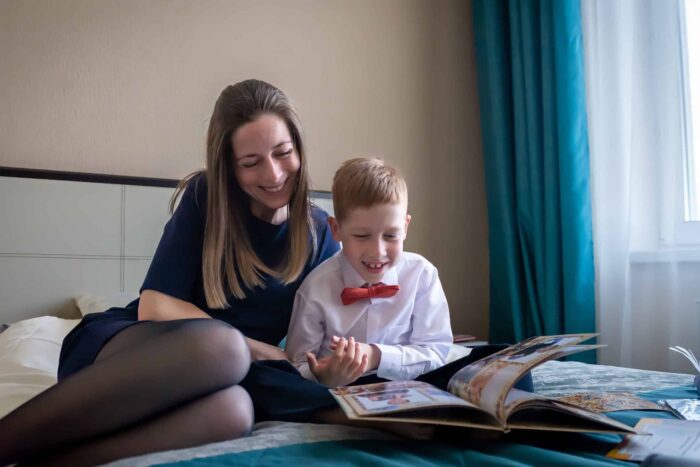
The Role of Multisensory Learning in Literacy Development
mayo 15, 2024 4:52 pmAt Neuhaus Education Center, we integrate sensory integration and kinesthetic learning into our teaching strategies to foster a deep, meaningful connection with language from an early age. This multisensory learning approach supports traditional learning while addressing the diverse needs of all students.
Multisensory learning involves using multiple senses to gather and process information. This method plays a crucial role in literacy development, as it combines visual, auditory, and tactile experiences to enhance memory and learning retention. By engaging more than one sense, students are able to form stronger neural connections related to the material they are learning.
Benefits of Sensory Integration in Literacy
Sensory integration refers to the way the brain organizes and interprets sensory information. In literacy education, integrating sensory activities helps students to better absorb and process new information. For example, using textured letters to teach phonics allows children to feel the shape of the letters while they simultaneously hear the sounds they make, effectively linking physical sensation with auditory input.
Integrating sensory experiences into literacy instruction enhances learning and helps in overcoming challenges associated with traditional teaching methods. For children who struggle with conventional reading and writing approaches, sensory integration can be particularly transformative. It allows these students to access literacy in a way that aligns with their natural learning preferences, which can significantly reduce frustration and increase motivation. By involving different senses, educators can create a more inclusive classroom environment where all students can succeed and develop their literacy skills in a supportive, engaging, and effective manner.
Kinesthetic Learning in Action
Kinesthetic learning, or learning through physical activities, is another facet of multisensory learning that is particularly beneficial in literacy education. At Neuhaus Education Center, our hands-on literacy activities encourage students to engage in writing words in sand, assembling sentences with physical word cards, and other engaging practices. These activities make learning more active and enjoyable, helping to reinforce literacy skills through movement and manipulation.
This dynamic form of education stimulates neurological development by integrating movement with cognitive processes. For instance, the act of tracing letters or shaping words physically can help solidify the learning of complex phonetic patterns and vocabulary. Additionally, kinesthetic learning techniques such as role-playing and gesture-based storytelling can dramatically enhance comprehension and retention, offering students a rich, immersive experience that makes abstract literacy concepts more concrete and memorable. These methods prove especially effective for energetic learners who might find traditional sit-down learning to be restrictive, providing them with the freedom to explore and absorb literacy in a manner that resonates with their natural tendencies.
The Impact of Hands-On Literacy
Hands-on literacy techniques are incredibly effective. They provide practical experiences that are essential for children who learn best through doing. This approach allows students to experiment with letters and words in a tangible way, promoting deeper understanding and retention. Hands-on activities also cater to a wide range of learning styles, making literacy development accessible for every student, regardless of their preferred learning mode.
By manipulating objects, building words, and participating in interactive reading sessions, children can see the direct effects of their actions on their learning, which reinforces their understanding and encourages active participation. Hands-on literacy techniques help break down barriers to learning by providing sensory-rich experiences that are particularly beneficial for students with learning disabilities or those who might struggle with attention. This inclusive approach ensures that every child feels capable and empowered to explore the world of words, fostering a lifelong love and mastery of reading and writing.
Neuhaus Education Center’s Commitment to Multisensory Learning
Centro educativo Neuhaus is committed to incorporating multisensory learning strategies in all our literacy programs. We believe that this approach is key to developing strong, confident readers and writers. Our curriculum is designed to integrate sensory integration and kinesthetic learning from the ground up, ensuring that every child can benefit from a tailored and effective literacy education.
Our experienced educators are trained to deliver these programs in a way that captivates young minds and adapts to individual learning needs. Through our innovative practices, we aim to create a nurturing learning environment that fosters a lifelong love of reading and learning. Every child deserves to experience the joy and success of reading. Through multisensory learning, Neuhaus Education Center aims to provide a foundation for robust literacy skills that will serve children throughout their lives.
Discover the transformative power of multisensory learning. Contact Neuhaus Education Center to learn more about our unique literacy programs and find out how you can support a child’s journey to becoming a proficient reader and writer. Together, we can unlock the potential of every young learner.